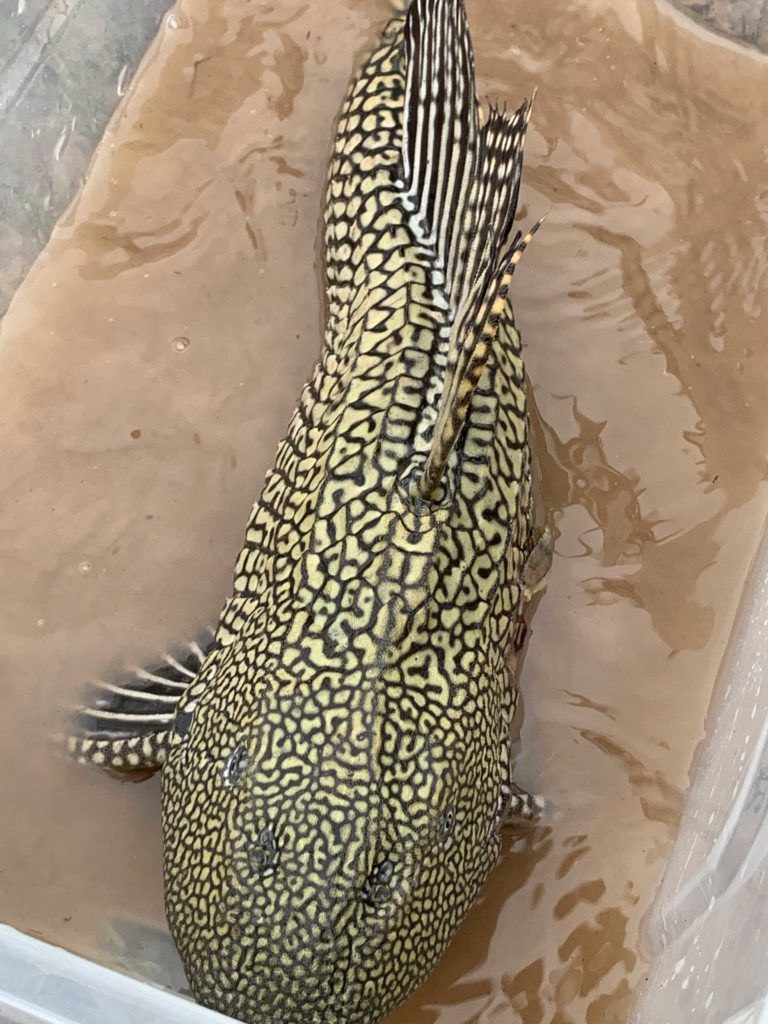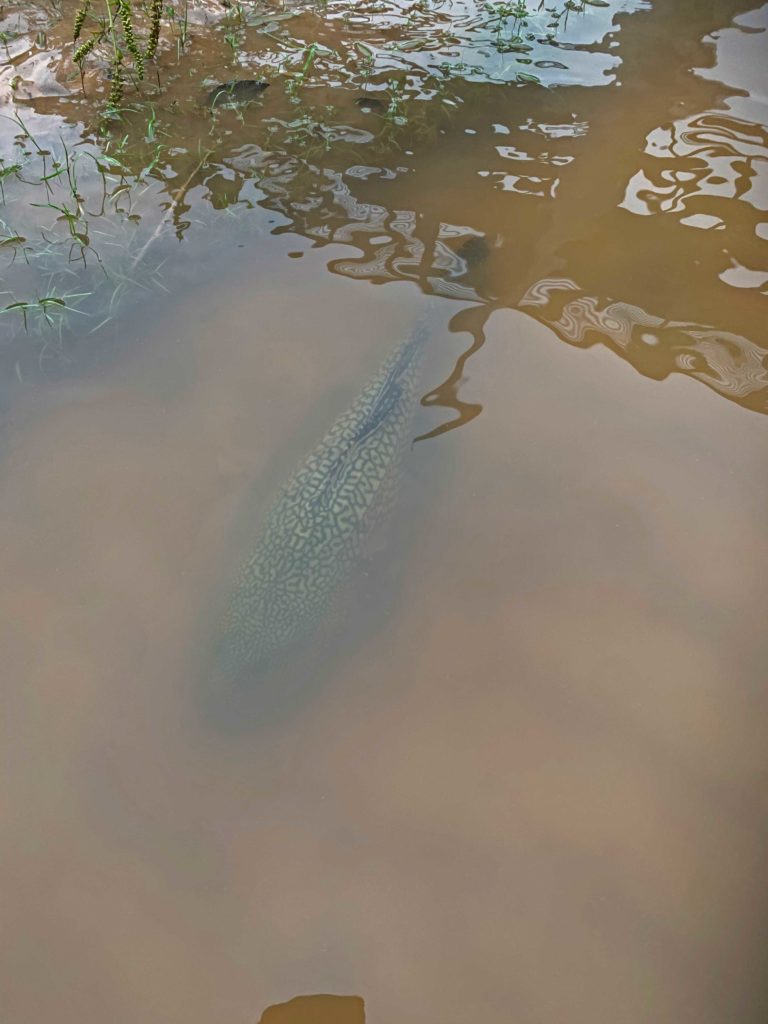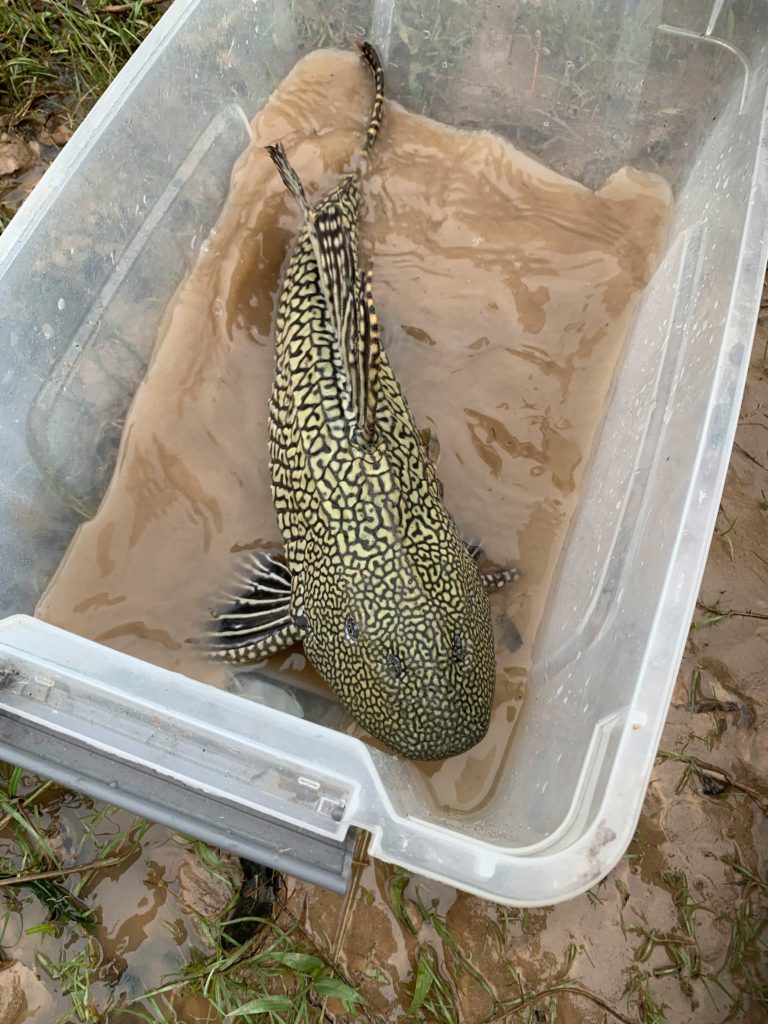Catfish 911
 Each year I train for the half marathon by running the trails in the Park. You might have passed me while out for a walk. I run that slowly. The slower you run, the less you miss. This is the only benefit I have found so far to my pace.
Each year I train for the half marathon by running the trails in the Park. You might have passed me while out for a walk. I run that slowly. The slower you run, the less you miss. This is the only benefit I have found so far to my pace.
Last week, I was crossing the Jackson Hill bridge and noticed a turtle in a big puddle on the path below. After the prior week’s Beta deluge, the bayou, in typical fashion, had come out of its banks and then receded, leaving small pools of water in low spots. My turtle was swimming around in one of those.
In the same way Lucy entices Charley Brown to endlessly kick at the inevitably withdrawn football, turtles endlessly beckon me. Come, look at me. I am interesting. I look different from other turtles. But they aren’t. Each and every one is a red-eared slider, which they recently renamed common slider to further taunt me.
I slowly ran down the paths to reach the turtle who was, of course no longer there, being somewhat faster than I. It truly is embarrassing. As long as I was there, I waded through the ankle-deep puddle because I am a child, but children are sometimes rewarded. A big fish swam up to me like a lost dog, gently bumping against my leg.

The water was hardly deep enough to submerge the fish.
I had another such experience on the bayou many years ago before the Park renovations. I was riding a mountain bike (a sport at which I was not slow!) in the Park and came upon a group of other riders standing around the same sort of isolated puddle. This one had an alligator gar in it. That fish was huge and while we knew we had to do something, no one wanted to lay hands on this monster.
While we debated and dithered, an HPD bicycle cop rode up and suggested that we each remove our front wheels and use them as a big sling to carry the fish to the water. It worked!
Here was my second opportunity to rescue a fish, but HPD did not arrive. I knew it was up to me to do something.
I mentally rehearsed the grab and toss I intended. I imagined what touching the fish was going to feel like so I was prepared for soft and slippery. When I gently reached down, I grasped something hard as a rock and with the texture of sandpaper. I reflexively let go.
I would have had another go at the rescue, but my efforts had so thoroughly stirred up the silt that I could no longer find the fish. I decided that I should exploit the human capacity to use tools and went home for whatever I had that most resembled a net and a bucket.
It is really all you need to know about me that I returned to the fish with a plastic storage bin and its lid. These items were not so much fit for purpose as they were to hand and would never be used to prepare food.
The puddle was still turbid as I prowled the perimeter, storage bin in hand. “Are you rescuing that fish?” a voice called down from atop the bridge. “Yes,” I replied. “Can you see it,” hoping her lofty perspective might help.
“No,” she said, “but I have a video of it!” In most circumstances, this would be the least helpful thing anyone could offer, but since I write this blog every week, I was overjoyed. The voice belonged to Mary Ellen Angel, who is aptly named. She was kind enough to share her video with everyone, although she declined to join me in the muck for the actual rescue part. Sensible woman.
You can see the entirety of the situation in her film.
As you can no doubt tell from the photographs of the fish in the plastic storage bin, I did manage to corral it. I wish I had known that this weird fish can survive 20 hours out of the water. I would have taken more time to look it over. And I might have taken more time scrambling down the muddy bank when my first toss landed the poor fish in the shrubbery.

The bin measures 18 inches diagonally. This fish struggled to fit. This was a big fish!
My fish is a sailfin catfish, one of a variety of armored catfish, which is why, when I tried to pick it up, instead of soft and slimy, it was hard and scratchy. These fish have several bony plates just under the skin that form a very effective armor.
Of course, it isn’t native to Texas or even the U.S., it is a South American fish that is closely related to the fish commonly known as plecostomus. Both of them are aquarium fish who will cheerfully nibble algae off the glass and other surfaces. Inevitably, some of them are tossed into the bayous to fend for themselves.
They are, unfortunately fending very well all over the world and this species is being monitored by groups who track invasive species. It’s unclear how much of a pest this fish is in the Park, but I rather wish I hadn’t tossed it back.
For what it is worth, if you catch one, or find one roaming around (they can live out of the water for a remarkably long time), they are said to be very tasty. The advice I read is to “cook them in the shell, and crack them open to eat.”

